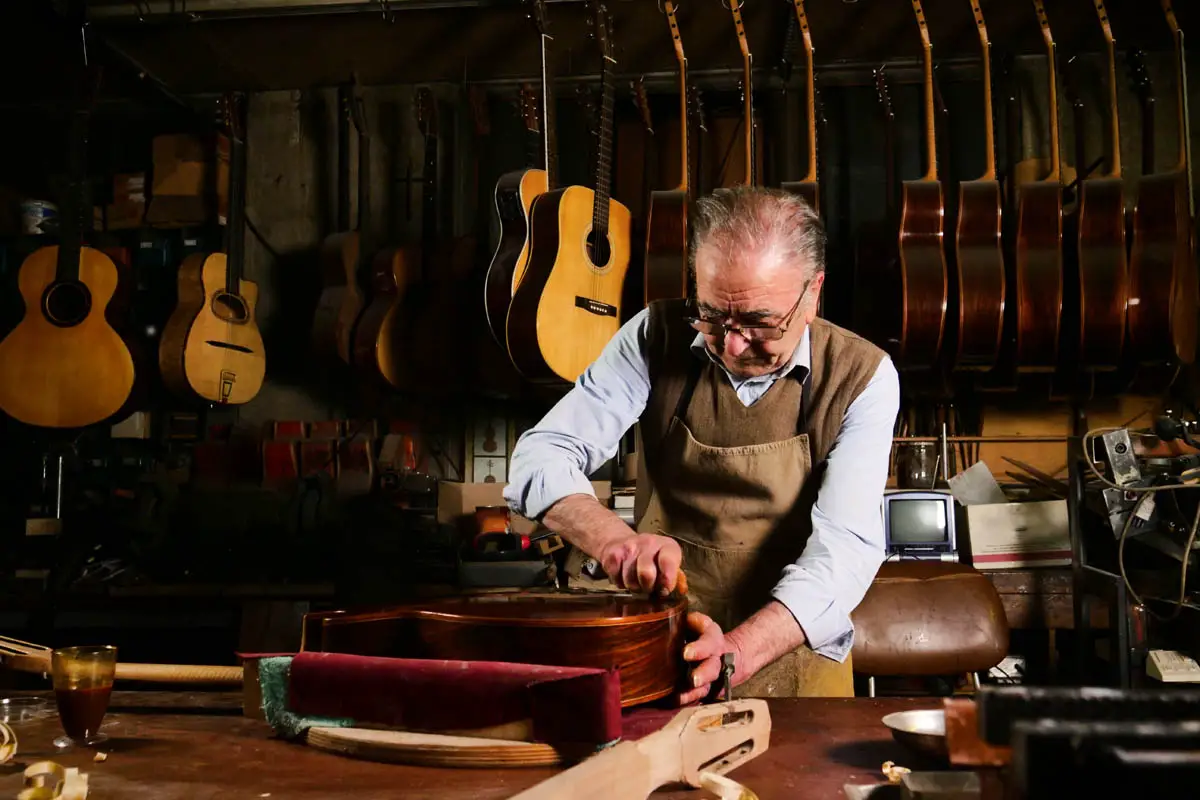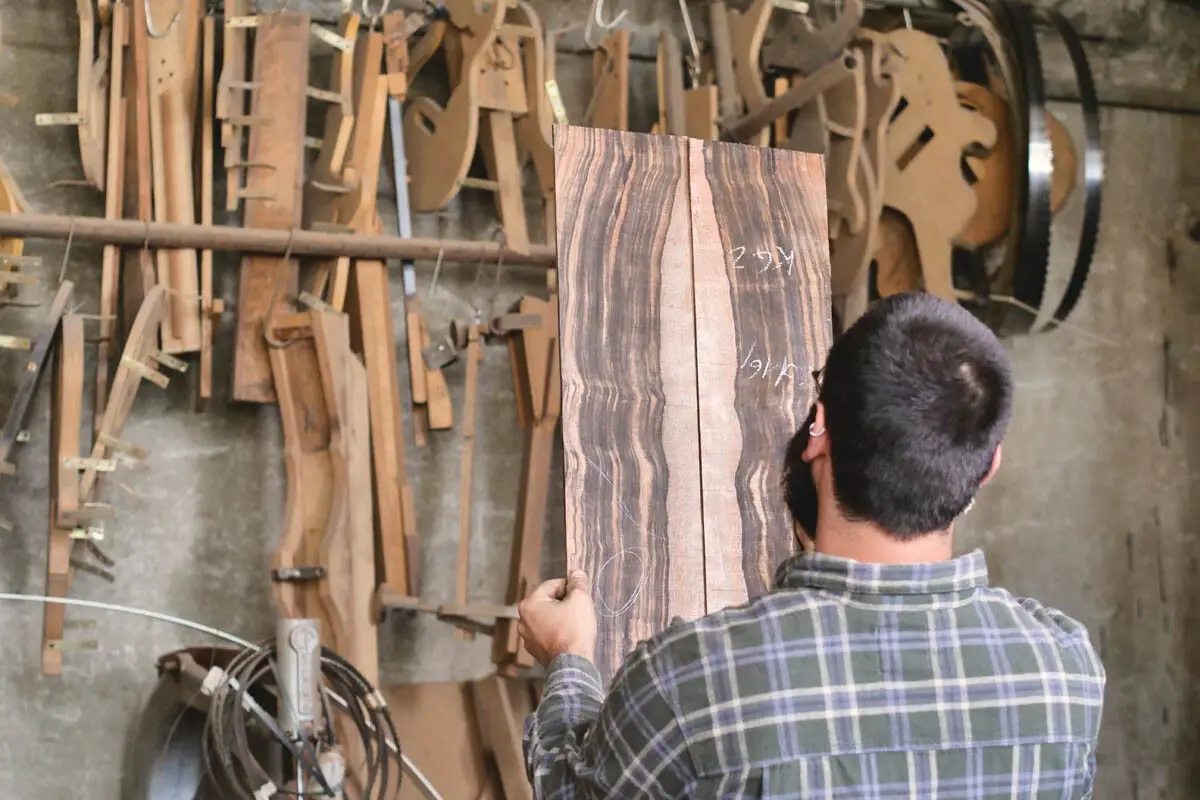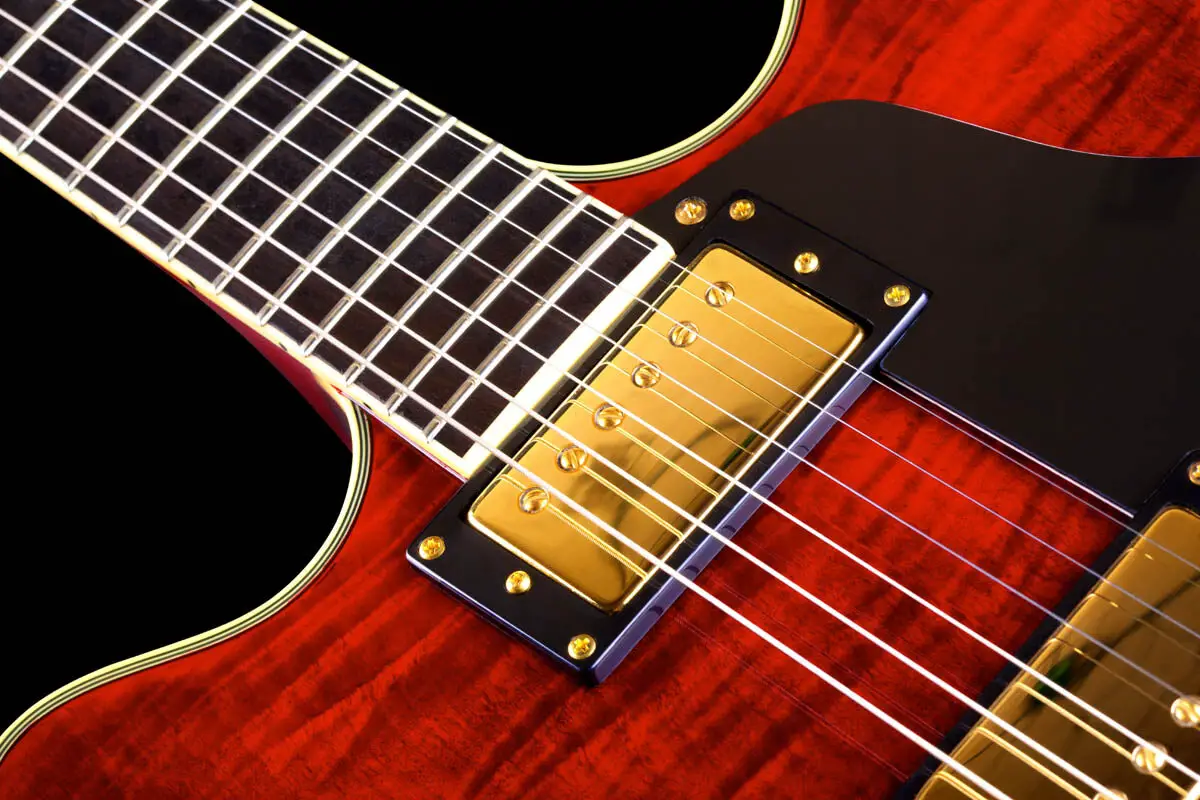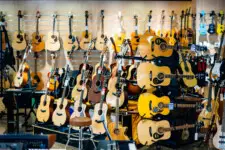What Makes a Guitar Sound Good? (Why Some Are Better)
Some guitars obviously sound better than others, although it’s not always apparent why since two guitars may look similar but sound very different.
It can be hard to know what to look for with so many guitars out there, and having a good idea of what really matters can help you narrow down your choices.
Electric and Acoustic guitars can vary in what makes them good or bad, and there are a few myths out there usually based on personal opinions.
I’m going to run you through the basics of what makes guitars sound good, from the body to the neck, and hardware to electronics.

1. The Wood a Guitar Is Made From
If you’ve read much about guitars then you would have heard the term ‘tonewood’.
Although tonewood is just wood, it is a name commonly used to describe woods that are used for making instruments, and different woods have different sound properties.
The wood that is used for various parts of a guitar strongly affects the sound they make, and is far more the case with acoustic guitars than electric guitars.
Acoustic Guitar Woods
Acoustic guitars that sound good always have solid wood soundboards (the top), where boxy flat sounding guitars have plywood tops.
This isn’t the only thing that defines what makes acoustic guitars sound good, as the wood used for the back, sides, and neck of the guitar influence sound too.
- The most resonant woods tend to sound the best, and sitka spruce is the gold standard for soundboards, with higher quality and more carefully seasoned wood defining the best sounding guitars.
- You will also find Adirondack (red spruce) featured on some great sounding guitars, but it’s not as common as sitka spruce.
Spruce is a bright-sounding wood when tapped, and so to have a balanced sounding guitar you want deeper-sounding woods for the back and sides.
The best sounding acoustic guitars will be made with all solid wood (not laminate), featuring a spruce top with woods like mahogany, rosewood, and maple back, sides, and neck.

Electric Guitar Woods
Tonewoods used to make electric guitar bodies are a thing of great debate. Some guitarists are sure the type of wood changes the tone, while many others say it doesn’t.
Whether it does or doesn’t change the sound of an electric guitar, one thing can be said is that it has far less effect on sound than with acoustic guitars.
- A softer wood like basswood is good for making a guitar with a flatter tone (great for metal), while ash and alder are great for producing more lively tones.
So the wood used in the body may not define what exactly makes an electric guitar sound good, and the neck should be a stronger focus.
A good quality neck wood will have a deep resonant sound when tapped, and an expert can pick up different necks and listen to the sound to find the best ones.
2. The Way A Guitar Is Made and the Body Shape
Acoustic guitars have more complex construction than electric guitars, but in both cases a better quality build with more attention to detail will result in a better sounding guitar.
Acoustic Guitar Build & Shape
Better sounding acoustic guitars have carefully scalloped bracing under the soundboard which give it strength while allowing it to resonate and project sound.
Expert luthiers hand-carve the bracing to fine tune the way the soundboard resonates.
If you look at a cheap acoustic guitar you will see the back and soundboard are quite flat, where a great sounding guitar has slight arch shapes that enhance the sound.
The neck joint is one major area that can define a better sounding guitar, and a tight fitting neck joint with very little glue will make a better sounding guitar than a loose joint with lots of glue.
Acoustic body shapes affect the sound in different ways, but essentially a larger guitar body will produce a louder more deeply resonant sound. Smaller body shapes can still sound fantastic, and the best sound really comes down to your personal preference.
Finally, the finish on an acoustic guitar body can affect its sound, and the best finishes are thinner which allows better resonance of the wood.
Electric Guitar Build and Shape
Body shape does not matter so much on electric guitars, and the main thing that affects sound is the quality of the neck, and how tightly the neck joins to the guitar body.
Many players say that set neck and neck-through guitars sound better, but that doesn’t mean that bolt-on necks sound bad either.
A set neck is usually found on a more expensive guitar, and with the attention to detail a luthier can give, you are likely to get a good sounding guitar.
With cheaper bolt-on neck electric guitars it can be hit or miss how good the neck joint is, but sometimes you can still get great sounding instruments.
More expensive bolt-on neck guitars are more likely to have a tight neck pocket, and when a neck fits tightly you get better sound transfer through to the body, and better sustain.
3. Guitar Hardware and Its Effect On Sound
The Bridge
A good acoustic guitar bridge will be set at the right height, be made of a hard material, and be compensated to give the best intonation.
Electric guitar bridges that are made from more pure metals and with reliable tremolo systems will promote better sustain, as well as keeping your guitar in tune, making a better sounding instrument.
The Nut
With all good sounding guitars the nut will be a harder material like bone, Tusq, urea, or imitation bone. These materials give a clearer sound than soft plastics, and give better sustain.
The Tuners
Good tuners will have a higher gear ratio (such as 18:1) which allows for a finer adjustment and better tuning.
No Matter whether tuners are sealed or unsealed, as long as they don’t slip and the strings are wound on the posts correctly they should all give the same sound quality.
4. Electric Guitars & Electronic Components
Pickups
Cheaper pickups can sometimes sound good, but more expensive ones are carefully crafted to bring out certain elements of the sound, and can allow you to get the tone you want.
The best sounding pickups can vary greatly for each person, and it really depends what sound you want from your instrument.

Controls & Sound Quality
Cheaper tone and volume pots, and switches can work ok, but often start breaking down after some use.
For a better sounding guitar, higher quality components will give smoother transitions and prevent crackling when changing settings, giving a solid signal to your amp.
5. How Guitar Setup Affects Sound Quality
No matter how good your guitar is, if it is set up poorly, then often your guitar won’t sound as good as it could.
Strings that are set too low to the frets will cause buzzing, along with incorrect bridge height, uneven frets, and a neck set with incorrect relief.
An electric guitar bridge that has the saddles set incorrectly can cause a few problems, one of them being intonation, which greatly affects how good a guitar sounds.
If the nut is not made correctly, or is worn, you can get that classic sitar sound on higher strings, get fret buzz on low frets, or have intonation that makes your guitar sound bad.
Wrapping It All Up
There are many factors that go into making a guitar sound good and they include wood types, build quality, hardware and electronics quality, neck joints, and more.
You don’t always need an expensive guitar to sound good, and as long as the guitar is constructed well it’s sound can often be improved with a good setup.
Acoustic guitar sound quality is far more influenced by the woods they are made from than electric guitars, and a solid spruce top is likely to improve in tone as it ages and is played more.
Electric guitar neck joints are very important to having a good sound, with the tightest neck joint possible giving the best sound.




